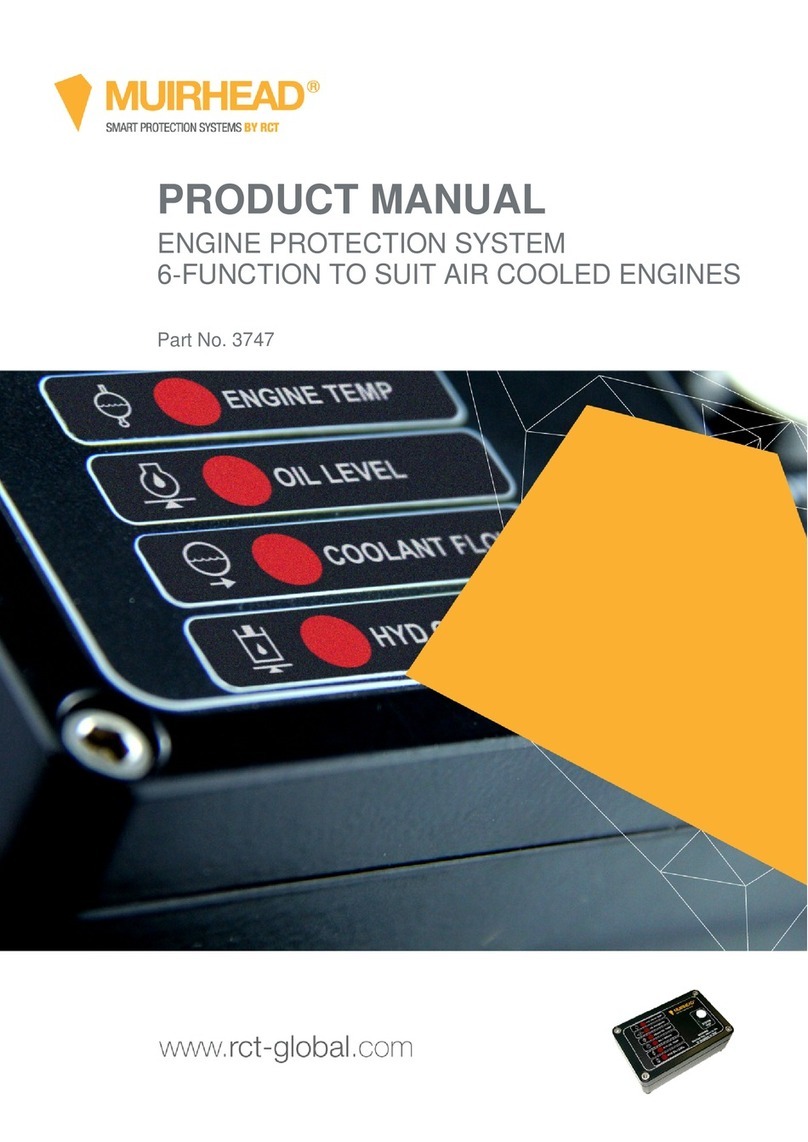Note
This function uses an ac circuit. This reduces electrolysis and corrosion of the coolant level sensor. This will
assist to keep the probe in good working order.
Function 2
This input is configured to have a one-second delay prior to activating the corresponding alert indicator,
external audible alarm, idle and ETR control circuits. This circuit activates when the circuit changes state and
becomes open. If this function is not required, pin 8 must be connected to ground.
Typical use: Low engine oil pressure
Function 3
This input is configured to have a one-second delay prior to activating the corresponding alert indicator,
external audible alarm, idle and ETR control circuits. This circuit activates when the circuit changes state and
becomes open. If this function is not required, pin 9 must be connected to ground.
Typical use: High engine temperature
Function 4
This input is configured to have a one-second delay prior to activating the corresponding alert indicator,
external audible alarm, idle and ETR control circuits. This circuit activates when the circuit changes state and
becomes open. If this function is not required, pin 10 must be connected to ground.
Typical use: Low engine oil level or transmission temperature
Outputs
Alarm Control Output
This circuit is activated as soon as an alert indicator is active. This output remains active until the EPS control
unit has no alert indicator active or the key is switched off. This output is disabled until a start signal is sensed.
This allows servicing to be carried out with the key ON without the alarm sounding.
Idle Control
This circuit operates as a direct opposite to the alarm control output. It switches off when the alarm control
output is active. This output is used in conjunction with additional control systems that return the engine to
idle when an alert indicator is activated. If return to idle is not required, this circuit should not be connected.
Engine Control (ETR)
This circuit operates in a similar way to the idle control output; however, it has a 0 to 40-second adjustable
time delay. This time delay is factory set to 10 seconds, allowing the machine to run for 10 seconds after an
alert indicator has been activated. This circuit is an energised to run output. This output also incorporates an
automatic system override circuit which allows the EPS control unit to override the engine oil pressure switch
allowing the engine to be started. If shutdown is not required, this circuit should not be connected.
⚠Warning
When an alert indicator is active, special care should be taken to assess safety considerations which may arise
from shutting the machine down.
1. Will the machine be left uncontrollable, as shutdown affects the braking and steering of most machines?
2. Can the machine be parked in a safe environment?




























